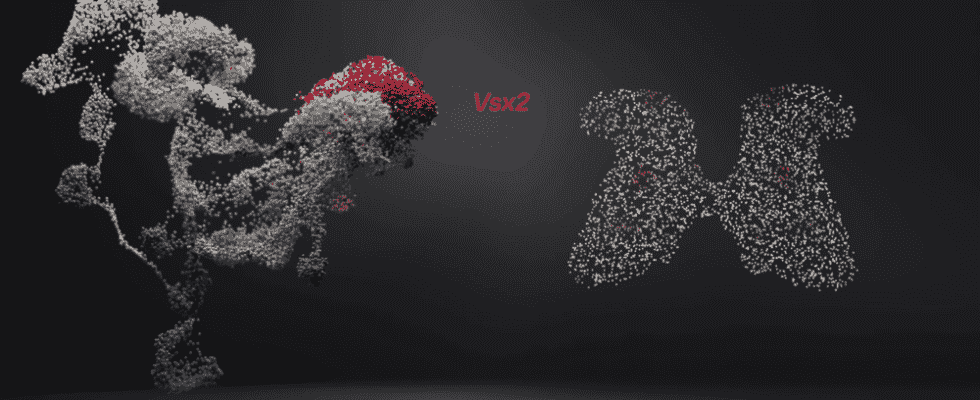Will medicine one day be able to allow paralyzed people to walk again? In Switzerland, teams led by Jocelyne Bloch, neurosurgeon at the Vaud University Hospital Center and Grégoire Courtine, neuroscientist at the Federal Polytechnic School of Lausanne, have been working on this project for years. Gathered in the NeuroRestore laboratory, their teams, which include around sixty people – engineers, doctors, biologists, neuroscientists – have developed implants to send electrical stimulation into the spinal cord. Their first work, published in 2018 in scientific journals Nature and Nature Neuroscience, show that six patients with partial paralysis could walk again when they received stimulation from electrodes placed on the region of the spinal cord that controls the leg muscles. A feat hailed by the scientific and medical community.
In a new study published Wednesday, November 9 in Nature, they demonstrate this time that their therapy has proven effective in nine paralyzed patients. The latter were able to “walk again, stand up, regain their muscles”, thanks to the stimulation induced by the NeuroRestore implants. Jocelyne Bloch and Grégoire Courtine also announce that at the end of the therapy, the improvement in the motor skills of the patients persists, even in the absence of electrical stimulation. They indicate, again, to have achieved a breakthrough in fundamental science since they created an atlas of the neurons of the spinal cord and discovered “the neuron which makes it possible to walk again”.
“With Grégoire, we launched the idea of creating a clinical study in 2012. We recruited ten patients, the first was implanted in 2016 and the last in 2021, details Jocelyne Bloch, interviewed by L’Express. The first study published in 2018 showed effectiveness on three patients, another study detailed this technique on six patients – with improved technology – and this time we show that our method was effective on nine patients.We also reveal that six months after their rehabilitation , they regained a neurological function that they had lost for years.” Indeed, researchers had so far proven that their patients could walk again while being electrically stimulated. They are now demonstrating that this treatment allows longer-term benefits to be maintained.
“The more severe the spinal cord injuries, the worse the recovery, but we have for example a patient whose left leg was totally paralyzed and who, after six months without stimulation, manages to move it and even take a few steps , continues the neurosurgeon. Our new article also tries to answer the question: why did they recover, what is the underlying mechanism?
Vsx2, the neuron that allows you to walk again
The NeuroRestore teams first hypothesized that this neurological recovery would be linked to a regrowth and reorganization of the nerve fibers involved in walking. “So we developed a technique to ‘profile’ all the neurons in the spinal cord and once this atlas was created, we developed artificial intelligence algorithms to navigate through this atlas and determine which neurons are active. and when”, explains Jocelyne Bloch. “This molecular atlas of the spinal cord is so precise that it allows us to observe, neuron by neuron, the evolution of the healing process”, adds Grégoire Courtine, in a press release.
Then their teams checked this hypothesis on different groups of rodents: mice that were healthy, paralyzed or that had received stimulation using electrodes. Each time, the spinal cord of small mammals was analyzed – thanks to genetic sequencing -, and a statistical study was carried out – thanks to algorithms – in order to determine which neurons were the most active.
Image showing the neuron atlas, on the left, and a section of the spinal cord, on the right. In red, Vsx2 neurons, particularly active in individuals with spinal cord injuries.
.NeuroRestore/Jimmy James Ravier
They discovered that electrical stimulation of the spinal cord responsible for the leg muscles activates a very specific type of neuron: Vsx2. If these neurons are not particularly solicited when healthy individuals walk, they are very active in individuals who have suffered a spinal cord injury. “It’s a bit as if the lesion caused a kind of cellular chaos in which the Vsx2 took the ‘leadership’, in order to restore order”, illustrates Jocelyne Bloch.
“We are going faster than Elon Musk”
In order to validate these discoveries, Stéphanie Lacour, also a professor at the Ecole polytechnique fédérale de Lausanne, augmented the implants with a series of light-emitting diodes which make it possible to stimulate the spinal cord, but also to exclusively inactivate the Vsx2 neurons. In mice suffering from a lesion, this inactivation of Vsx2 neurons immediately stopped walking, whereas it had no effect on healthy mice. This proves that the Vsx2 neurons are both necessary and sufficient for the electrostimulation treatment to be effective and lead to the reorganization of the nervous system.
This work could open up therapeutic opportunities on a larger scale. “We have always aimed, in addition to developing an academic project, to have an impact on humanity, so we also founded Onward Medical, an industry that develops implants that could be used in a large number of people. “, emphasizes Jocelyne Bloch. Pivotal studies including more patients are in preparation. They will aim to demonstrate that it is possible to popularize their technology so that it will one day be effective and affordable enough to be reimbursable by health insurers. “This is our number one objective, the second is to learn how to communicate better with the spinal cord to improve other functions, such as those related to the intestines, the bladder, etc.,” adds the specialist.
These other projects will require significant investment, but NeuroRestore can count on public funding from the University of Lausanne, the Ecole Polytechnique and the Center hospitalier universitaire vaudois, but also from the Défitech foundation, created by Daniel Borel, president emeritus of Logitech. What to compete with companies like Neuralink, of Elon Musk? “In fact, we are going faster than him”, slips Jocelyne Bloch.
Victor Garcia
